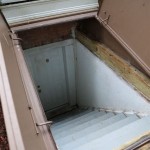The Ultimate Guide to Cost to Make a Basement: Essential Aspects to Consider
Transforming an unused basement into a functional and comfortable living space can provide significant value to your home. However, embarking on a basement finishing project requires careful budgeting and an understanding of various cost factors.
1. Labor Costs
Labor will account for a substantial portion of your basement finishing costs. The fees for contractors vary depending on their experience, location, and the scope of the project. Consider obtaining multiple bids to compare costs and find the best value.
2. Materials
The materials used in your basement finishing will impact your budget significantly. Wall coverings, flooring, fixtures, and appliances all contribute to the overall cost. Explore various options and choose materials that align with your design preferences and budget.
3. Permits and Inspections
Depending on your municipality, you may require permits to finish your basement. Permit fees and inspection costs should be factored into your budget to ensure compliance with local building codes.
4. Electrical and Plumbing Work
Basement finishing often involves electrical and plumbing upgrades. Installing new outlets, switches, lighting fixtures, and plumbing lines will require professional assistance. These costs can vary based on the complexity of the work required.
5. Heating, Ventilation, and Air Conditioning (HVAC)
To ensure a comfortable living space, your basement may require additional heating, ventilation, and air conditioning (HVAC) systems. Installing ductwork, registers, and a separate thermostat will add to the project costs.
6. Waterproofing
Basements are prone to moisture problems, so waterproofing measures are crucial. Installing a sump pump, sealing walls, and applying a vapor barrier will protect your finished basement from water damage.
7. Insulation
Insulating your basement is essential for both energy efficiency and comfort. Installing insulation in walls, ceilings, and floors will help regulate temperature and reduce heating and cooling costs.
8. Finishing Details
Once the major construction is complete, finishing details such as paint, trim, and flooring will add the final touches to your basement. These costs may seem small but can accumulate quickly.
9. Contingencies
It's always wise to add a contingency fund to your basement finishing budget. Unforeseen circumstances, delays, or changes can occur, and having a contingency fund will allow you to cover unexpected expenses.
10. Consult with Professionals
Working with experienced contractors and consulting with an architect or interior designer can provide valuable insights and help you create a functional and budget-friendly basement finishing plan. Their expertise can save you time and money in the long run.
Conclusion
Understanding the essential cost factors involved in basement finishing is key to planning a successful project. By carefully considering labor costs, materials, permits, electrical and plumbing work, HVAC, waterproofing, insulation, finishing details, and contingencies, you can create a budget that aligns with your vision and financial constraints.

Cost To Finish A Basement In 2024 Forbes Home

Cost To Build A Basement In Chicago New Construction

Basement Cost Per M2 London Conversion

The Cold Hard Numbers Cost To Finish Basement

Cost To Build A Basement In Chicago New Construction

How Much Does It Cost To Finish A Basement 2024

New Build Basement Cost

New Build Basement Cost

10 Basement Conversion Costs You May Need To Consider

Why Build A Basement Guide To Building Down Checkatrade








